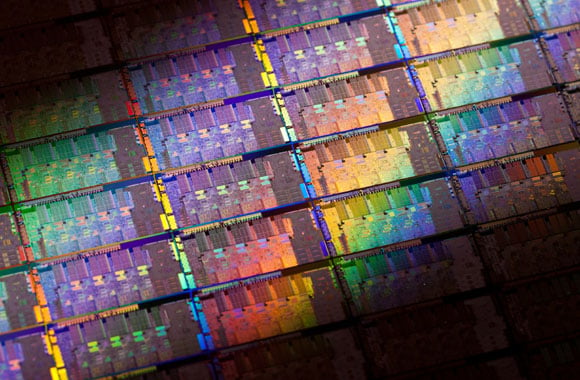Intel Insider: Hardware DRM At Home In Sandy Bridge
Intel's Sandy Bridge made headlines this week for its improved efficiency, reduced power consumption, and much-improved graphics engine, but there's another important feature that's not yet gotten the same degree of press. One of the new technologies incorporated into Sandy Bridge, Intel Insider, is designed to ensure that only paying, authorized users are able to view premium content (as defined by the broadcaster). In the company's words: "Intel Insider is a service that enables consumers to enjoy premium Hollywood feature films streamed to their PC in high quality 1080P high definition....Think of it as an armored truck carrying the movie from the Internet to your display, it keeps the data safe from pirates, but still lets you enjoy your legally acquired movie in the best possible quality."
DRM? Don't Be Silly
According to Intel representative Nick Knupffer, this is not DRM. In his blog post, Knupffer explains that DRM "is a piece of software, not hardware...I will say that Intel Insider is NOT a DRM technology."
Claptrap—and not just according to us. Dictionary.com defines DRM as "Any technology used to limit the use of software, music, movies or other digital data." Wikipedia calls it " a term for access control technologies that can be used by hardware manufacturers, publishers, copyright holders and individuals to limit the usage of digital content and devices," while Webster's Online Dictionary states that DRM is "a generic term that refers to access control technologies...to limit usage of digital media or devices."

Intel's Sandy Bridge, wafer style
Intel's attempt to redefine the term echoes The Onion's recommendation to lower the number of obese Americans by raising the definition from 55 percent body fat to 90 percent body fat. Is Intel Insider DRM? Absolutely—but that's not automatically a bad thing.
The only reason Knupffer is attempting to twist his terms is because the label 'DRM' carries such a stigma. DRM didn't become a curse-word because people inherently objected to it, but because so many companies have introduced bug-ridden, ill-considered schemes that effectively punish loyal customers for staying legitimate. The success of both Steam and iTunes (pre 2009) indicates that while consumers may never like DRM, they're willing to accept it if the restrictions aren't too draconian.
Knupffer, meanwhile, argues that technologies like Intel Insider are necessary to truly bring HD content to the PC.
DRM? Don't Be Silly
According to Intel representative Nick Knupffer, this is not DRM. In his blog post, Knupffer explains that DRM "is a piece of software, not hardware...I will say that Intel Insider is NOT a DRM technology."
Claptrap—and not just according to us. Dictionary.com defines DRM as "Any technology used to limit the use of software, music, movies or other digital data." Wikipedia calls it " a term for access control technologies that can be used by hardware manufacturers, publishers, copyright holders and individuals to limit the usage of digital content and devices," while Webster's Online Dictionary states that DRM is "a generic term that refers to access control technologies...to limit usage of digital media or devices."

Intel's Sandy Bridge, wafer style
Intel's attempt to redefine the term echoes The Onion's recommendation to lower the number of obese Americans by raising the definition from 55 percent body fat to 90 percent body fat. Is Intel Insider DRM? Absolutely—but that's not automatically a bad thing.
The only reason Knupffer is attempting to twist his terms is because the label 'DRM' carries such a stigma. DRM didn't become a curse-word because people inherently objected to it, but because so many companies have introduced bug-ridden, ill-considered schemes that effectively punish loyal customers for staying legitimate. The success of both Steam and iTunes (pre 2009) indicates that while consumers may never like DRM, they're willing to accept it if the restrictions aren't too draconian.
Knupffer, meanwhile, argues that technologies like Intel Insider are necessary to truly bring HD content to the PC.
Currently this service [1080P streaming] does not exist because the movie studios are concerned about protecting their content, and making sure that it cannot be stolen or used illegally. So Intel created Intel Insider... This technology is built into the new Intel chips and will become even more important once wireless display technology like Intel’s WiDi become more popular, as it would prevent pirates from stealing movies remotely just by snooping the airwaves. WiDi enables you to wirelessly beam video to your big screen TV easily and in HD."It's by no means certain that content providers are just one secure pipeline away from hurling 1080P content around the tubes willy-nilly but it's possible that content providers might explore new methods of delivery more readily if they felt their products were protected in some way. Sandy Bridge's new technology will undoubtedly spark controversy in certain corners, but focusing too much on Intel Insider is a mistake. Successful business models aren't built solely on the presence or absence of a hardware security level, but on a company's ability to balance 'reasonable' restrictions against the personal freedoms customers' expect.

